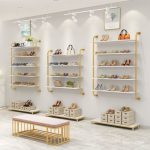Creating an effective mobile shop requires more than just stocking the latest devices in retail industry. The physical space where you sell these products plays a crucial role in attracting customers, showcasing merchandise, and ultimately driving sales. A simple mobile shop design helps customers focus on your products rather than being distracted by cluttered spaces. Whether you’re launching a new store or renovating an existing one, understanding the principles of effective retail design can significantly impact your business success.
This guide explores the essential elements of simple mobile shop design, from layout considerations to visual merchandising techniques. We’ll examine current trends, best practices, and practical strategies to help you create a space that not only looks great but also functions efficiently and drives revenue. By the end, you’ll have a clear roadmap for designing a mobile shop that stands out in the market while providing an exceptional customer experience.
The Importance of Simple Mobile Shop Design
Why Simplicity Matters in Retail
When planning a simple mobile shop design, prioritize customer flow and product visibility above all else. In the world of mobile retail, simplicity isn’t just an aesthetic choice—it’s a strategic business decision. Simple designs create clean, uncluttered environments that allow your products to take center stage. This approach is particularly important for mobile shops, where high-value items need to be showcased effectively while maintaining security.
Research shows that customers make judgments about a store within the first 7 seconds of entering. A cluttered, confusing layout can immediately create a negative impression, potentially driving customers away before they even engage with your products. In contrast, a well-executed simple mobile shop design can significantly increase your conversion rates and sales by creating a space where customers feel comfortable and can easily find what they’re looking for.
Business Benefits of Simple Design
Effective mobile shop design balances aesthetic appeal with practical functionality for both customers and staff. Beyond aesthetics, simple mobile shop designs offer tangible business benefits:
- Improved customer experience: Clear pathways and intuitive layouts help customers navigate your store easily, reducing frustration and increasing browsing time.
- Enhanced product focus: Minimalist backgrounds and strategic lighting draw attention to your merchandise, making products more appealing.
- Operational efficiency: Well-designed spaces optimize staff workflows, improving service speed and reducing operational costs.
- Adaptability: Simple designs are easier to update as product lines and trends evolve, saving on renovation costs.
- Brand perception: Clean, thoughtful designs convey professionalism and attention to detail, enhancing your brand image.
A study by the Retail Design Institute found that stores with optimized layouts experienced up to 40% higher sales compared to poorly designed spaces. This demonstrates that investing in simple mobile shop interior design is not just about aesthetics—it’s a direct investment in your bottom line.
Key Elements of Simple Mobile Shop Design
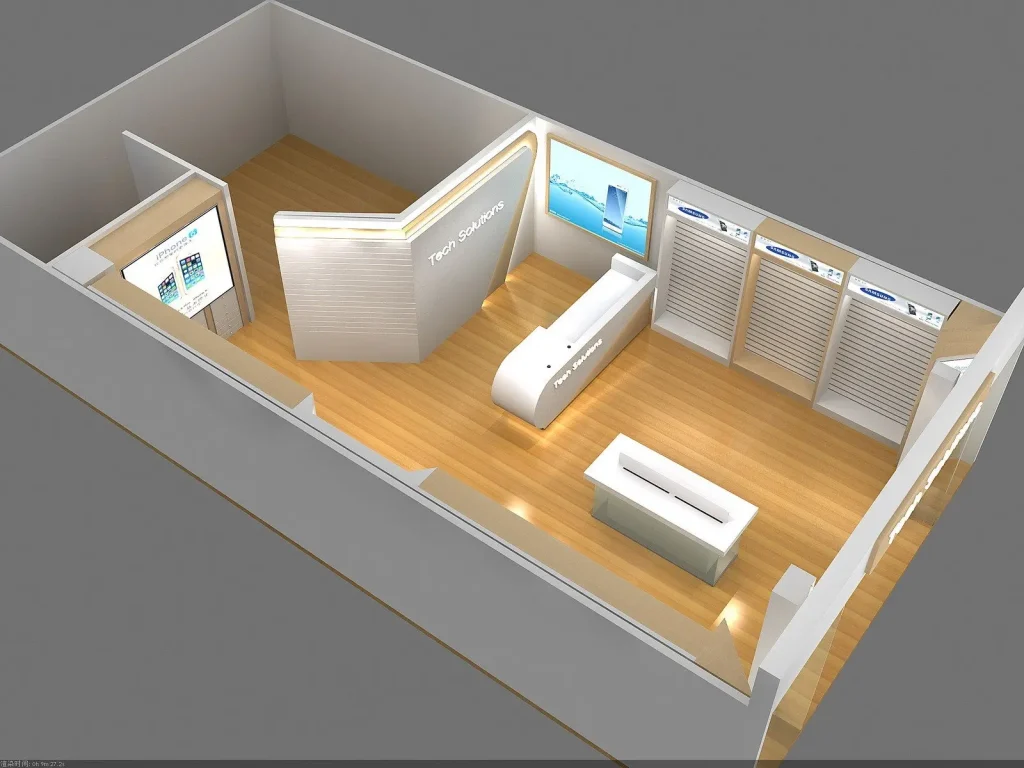
The best mobile shop design considers both current trends and timeless principles of retail space utilization. Creating an effective mobile shop requires attention to several key design elements that work together to create a cohesive, functional space:
Layout and Flow
Your mobile shop layout should guide customers naturally from entrance to checkout while maximizing exposure to products. The layout is the foundation of your store design, determining how customers move through the space and interact with your merchandise. For mobile shops, a clear, logical flow is essential.
Consider these layout principles:
- Circular flow patterns: Design pathways that naturally guide customers through your entire store before reaching the checkout.
- Strategic product placement: Position high-margin accessories and impulse purchases near the checkout area.
- Adequate space: Ensure aisles are wide enough for comfortable browsing, especially during busy periods.
- Focal points: Create visual anchors throughout the store to draw customers deeper into the space.
When implementing mobile store design concepts, consider how technology can enhance the customer experience. Interactive displays or digital signage can provide product information while maintaining the simplicity of your physical space.
Visual Merchandising
Simple mobile shop interior design focuses on creating a clean, uncluttered environment that puts products first. Visual merchandising is the art of presenting products in a way that attracts attention and encourages purchases. For mobile shops, this means creating displays that highlight devices while communicating their features and benefits.
Effective visual merchandising strategies include:
- Tiered displays: Use varying heights to create visual interest and make more products visible.
- Feature areas: Dedicate prime space to new releases or high-margin items.
- Consistent spacing: Maintain uniform spacing between products for a clean, organized appearance.
- Complementary groupings: Display accessories near the devices they complement to encourage add-on purchases.
Modern mobile store design emphasizes clean lines, minimalist displays, and strategic lighting to highlight products. Remember that less is often more—avoid the temptation to display every product variant, which can overwhelm customers and create visual clutter.
Lighting Design
Lighting is perhaps the most underrated element of store design, yet it dramatically impacts how products are perceived. For mobile shops selling devices with screens, lighting is particularly crucial.
Consider these lighting principles:
- Layered lighting: Combine ambient, accent, and task lighting for a well-balanced environment.
- Product-specific lighting: Use directional lighting to highlight key products without creating glare on screens.
- Color temperature: Choose lighting with appropriate color temperatures that accurately represent product colors.
- Energy efficiency: Invest in LED lighting to reduce energy costs while providing superior illumination.
The key to effective simple mobile shop interior design is strategic use of space and thoughtful product placement. When done right, lighting not only showcases your products effectively but also creates an atmosphere that encourages customers to stay longer and explore more.
Current Mobile Shop Design Trends
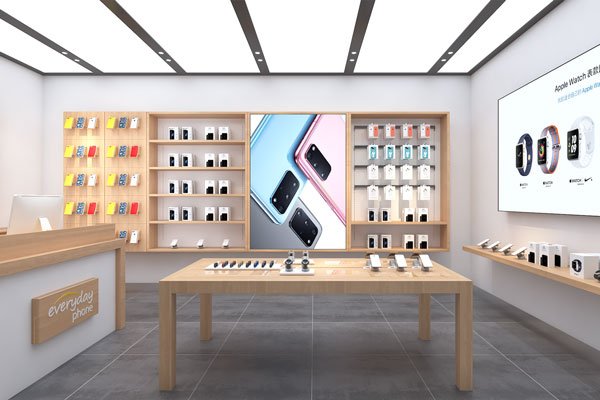
Successful mobile store design creates an intuitive shopping journey from entrance to checkout. The mobile retail landscape is constantly evolving, with new design trends emerging as consumer preferences and technology change. Here are the most influential trends shaping simple mobile shop design in 2025:
Minimalist Aesthetics
Minimalism continues to dominate mobile shop design, with an emphasis on clean lines, uncluttered spaces, and monochromatic color schemes. This approach creates a sophisticated backdrop that allows products to stand out while creating a sense of calm and order.
Key minimalist design elements include:
- Neutral color palettes: Whites, grays, and blacks create a timeless foundation that won’t compete with product displays.
- Hidden storage: Concealed storage solutions maintain clean sightlines while keeping necessary supplies accessible.
- Simplified signage: Clear, concise messaging without visual clutter.
- Intentional negative space: Strategic use of empty space to create visual breathing room.
Implementing simple mobile shop design ideas like floating shelves can maximize your display space without cluttering the floor. This approach not only looks modern but also creates a more spacious feel, even in smaller shops.
Technology Integration
Technology is increasingly becoming an integral part of the in-store experience, blurring the line between physical and digital retail. Smart integration of technology can enhance the customer experience while maintaining the simplicity of your design.
Innovative technology applications include:
- Interactive product displays: Touchscreens that provide detailed product information without cluttering physical space with signage.
- Digital price tags: Electronic shelf labels that can be updated centrally, ensuring pricing accuracy.
- Virtual try-on experiences: Augmented reality solutions that allow customers to visualize products.
- Integrated POS systems: Streamlined checkout solutions that reduce counter clutter.
Look for simple mobile shop design ideas that incorporate technology seamlessly into the customer experience. The goal is to enhance the shopping experience without creating technological distractions that detract from your products.
Sustainable Materials and Practices
Sustainability has moved from a nice-to-have to a consumer expectation. Mobile shops are responding with eco-friendly design choices that reduce environmental impact while appealing to environmentally conscious consumers.
Sustainable design elements include:
- Recycled and upcycled materials: Repurposed materials for fixtures and displays.
- Energy-efficient lighting: LED lighting systems that reduce energy consumption.
- Biophilic elements: Incorporation of plants and natural materials to improve air quality and customer well-being.
- Modular fixtures: Adaptable display systems that can be reconfigured rather than replaced.
With simple small mobile shop design, every element must serve multiple purposes to optimize the space. This approach naturally aligns with sustainability principles by maximizing the utility of each component in your store.
Simple Small Mobile Shop Design Strategies for Limited Spaces

Simple small mobile shop design requires creative solutions to maximize limited square footage. Many mobile shops operate in relatively small spaces, whether in shopping malls, kiosks, or narrow storefronts. Limited space presents unique challenges but can also lead to innovative design solutions.
Maximizing Vertical Space
When floor space is limited, thinking vertically becomes essential. The most successful simple small mobile shop design makes strategic use of vertical space and modular fixtures.
Effective vertical space strategies include:
- Wall-mounted displays: Utilize walls for product displays and information.
- Tiered shelving: Stepped displays that showcase multiple products in a small footprint.
- Ceiling-suspended elements: Hanging displays or signage that draw the eye upward.
- High storage: Place rarely accessed inventory or supplies in higher storage areas.
By utilizing your walls effectively, you can free up valuable floor space for customer movement and key display areas.
Multi-functional Fixtures
In small spaces, every fixture should serve multiple purposes. Investing in simple mobile shop interior design can make even small retail spaces feel spacious and inviting.
Consider these multi-functional approaches:
- Display cases with storage: Showcase products on top while storing inventory underneath.
- Movable displays: Fixtures on wheels that can be reconfigured for events or to create temporary pathways.
- Transformable furniture: Pieces that can adapt to different needs throughout the day.
- Built-in technology: Displays with integrated digital screens or charging stations.
Your simple mobile shop counter design should facilitate smooth transactions while showcasing high-margin accessories. In small shops, the counter often serves as both a checkout area and a prime display location for accessories and impulse purchases.
Creating Visual Space
Even when physical space is limited, design techniques can create the perception of a larger, more open environment:
- Strategic mirrors: Placed correctly, mirrors can visually double your space.
- Light colors: Lighter wall colors recede visually, making spaces feel larger.
- Consistent flooring: Using the same flooring throughout creates continuity and visual flow.
- Transparent elements: Glass or acrylic fixtures maintain sightlines and reduce visual weight.
When planning your mobile shop layout, create clear pathways that prevent bottlenecks during busy periods. This is particularly important in small spaces where customer congestion can quickly become problematic.
Simple Mobile Shop Interior Design
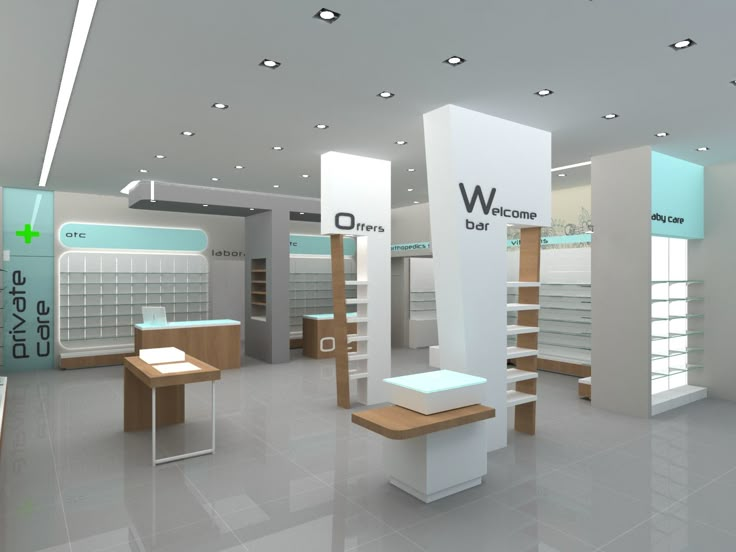
Simple mobile shop interior design focuses on creating a clean, uncluttered environment that puts products first. The interior design of your mobile shop sets the tone for the customer experience and communicates your brand values. Effective interior design balances aesthetic appeal with practical functionality.
Color Psychology and Branding
Color choices significantly impact customer perception and behavior. Your color scheme should align with your brand identity while creating the right atmosphere for shopping.
Consider these color principles:
- Brand alignment: Use colors that reflect your brand identity consistently.
- Psychological effects: Understand how different colors affect mood and behavior (e.g., blue creates trust, red creates urgency).
- Contrast for emphasis: Use contrasting colors to highlight key areas or products.
- Simplicity: Limit your palette to 2-3 primary colors plus neutrals to maintain visual cohesion.
Your mobile shop design should reflect your brand identity while showcasing products effectively. Consistency between your brand colors, website, packaging, and physical store creates a cohesive brand experience.
Materials and Textures
The materials you choose for floors, walls, fixtures, and displays contribute significantly to both aesthetics and functionality:
- Durability: Select materials that can withstand high traffic and frequent cleaning.
- Tactile experience: Consider how materials feel to the touch, especially for surfaces customers interact with.
- Acoustic properties: Choose materials that help manage sound levels for a comfortable environment.
- Visual warmth: Incorporate natural materials like wood to add warmth to technology-focused spaces.
A well-planned simple mobile shop counter design serves as both a functional checkout area and a final opportunity for sales. The materials used here should be particularly durable while maintaining the design aesthetic of your store.
Signage and Wayfinding
Clear, consistent signage helps customers navigate your store and find what they’re looking for. Effective signage is informative without being visually overwhelming.
Signage best practices include:
- Hierarchy of information: Prioritize the most important information with size and placement.
- Consistent style: Maintain visual consistency across all signage.
- Strategic placement: Position signs where customers naturally look for guidance.
- Digital integration: Consider digital signage for content that changes frequently.
The ideal mobile shop layout balances open space with product displays to create a comfortable shopping environment. Clear signage supports this layout by helping customers understand the organization of your store at a glance.
Technology Integration in Simple Mobile Shop Design
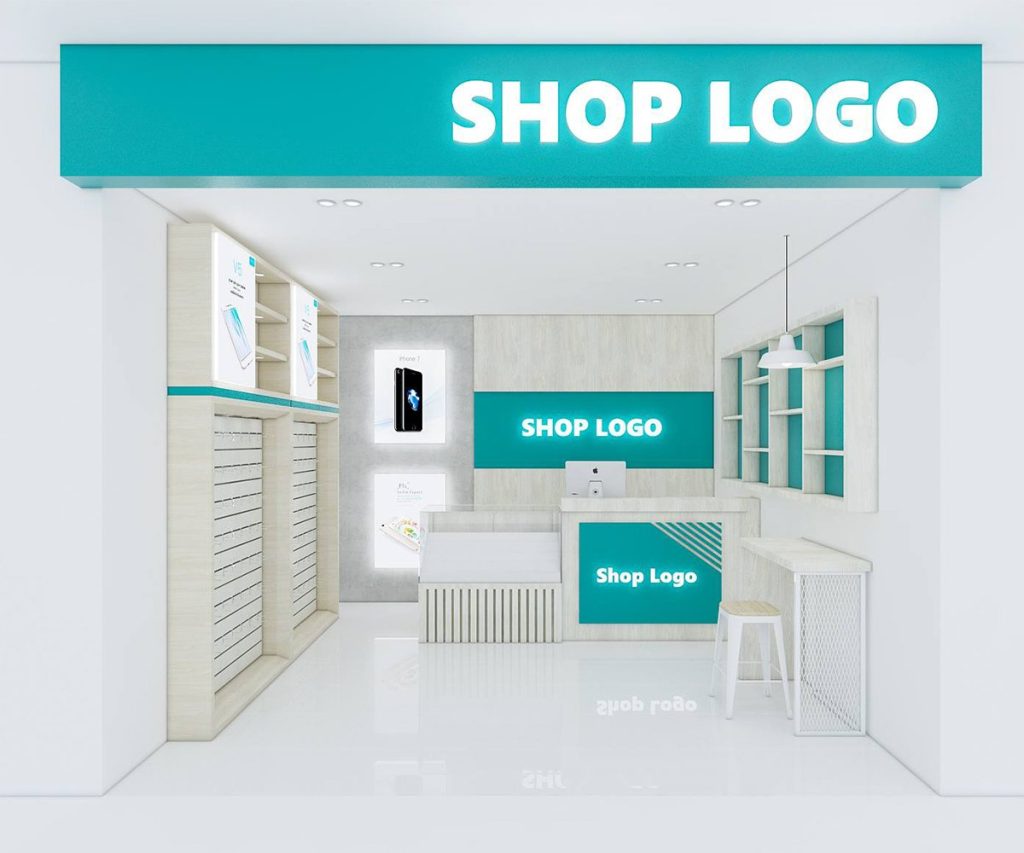
When implementing mobile store design concepts, consider how technology can enhance the customer experience. Technology in retail is no longer limited to the products you sell—it’s becoming an integral part of the shopping experience itself. Strategic technology integration can enhance your simple mobile shop design while providing practical benefits.
Interactive Displays and Demos
Interactive technology allows customers to engage with products in meaningful ways:
- Live demo units: Fully functional devices that customers can test before purchasing.
- Interactive comparison tools: Digital displays that allow customers to compare features across different models.
- Virtual reality experiences: Immersive demonstrations of product capabilities.
- Touchscreen product catalogs: Digital browsing experiences that save physical space.
Consider ergonomics in your simple mobile shop counter design to ensure staff comfort during long shifts. This includes the integration of technology tools that streamline the checkout process while maintaining the simplicity of your design.
Security Integration
Security is a particular concern for mobile shops selling high-value devices. Modern security solutions can be integrated into your design without creating an unwelcoming atmosphere:
- Discreet security cameras: Surveillance systems that blend with your interior design.
- Electronic article surveillance: Anti-theft systems integrated into displays.
- Smart inventory tracking: RFID or similar technology that monitors product movement.
- Secure display fixtures: Displays that showcase products while preventing theft.
The best simple mobile shop design ideas balance aesthetic appeal with practical functionality. This includes security measures that protect your inventory without creating a fortress-like atmosphere that detracts from the shopping experience.
POS and Payment Systems
Modern point-of-sale systems do more than process transactions—they can enhance the overall customer experience:
- Mobile POS: Tablet-based systems that allow transactions anywhere in the store.
- Contactless payment options: Multiple payment methods for customer convenience.
- Digital receipts: Eco-friendly alternatives to paper receipts.
- Customer data integration: Systems that remember customer preferences and purchase history.
Your simple mobile shop counter design should facilitate smooth transactions while showcasing high-margin accessories. Modern POS systems can reduce the physical footprint of checkout areas, freeing up valuable space for product displays.
Mobile Shop Design Best Practices and Implementation
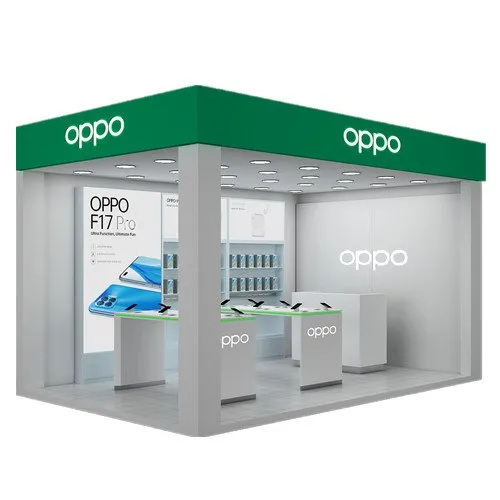
Effective mobile shop design balances aesthetic appeal with practical functionality for both customers and staff. Implementing a new shop design or renovating an existing space requires careful planning and execution. Here are best practices to guide your implementation process:
Planning and Budgeting
Before any physical work begins, thorough planning is essential:
- Set clear objectives: Define what you want your design to achieve (e.g., increased sales, improved customer flow).
- Establish a realistic budget: Include contingency funds for unexpected issues.
- Create a timeline: Develop a phased implementation plan, especially if renovating an existing store.
- Prioritize elements: Identify which design elements are most critical to your objectives.
When planning your mobile shop layout, create clear pathways that prevent bottlenecks during busy periods. This planning stage is the time to address potential flow issues before they become built-in problems.
Working with Professionals
While some aspects of shop design can be DIY, professional input often leads to better results:
- Retail design specialists: Consider consulting with designers experienced in mobile retail.
- Lighting experts: Professional lighting design can dramatically improve product presentation.
- Contractors: Work with experienced contractors for structural changes or custom fixtures.
- Technology integrators: Specialists can ensure seamless technology implementation.
The best mobile shop design considers both current trends and timeless principles of retail space utilization. Professionals can help you balance trendy elements with timeless design principles that won’t quickly become dated.
Testing and Refinement
Design is an iterative process that continues after implementation:
- Soft opening: Test your design with a limited audience before full launch.
- Staff feedback: Gather input from employees who work in the space daily.
- Customer surveys: Collect feedback on the shopping experience.
- Analytics: Use foot traffic analysis and sales data to identify areas for improvement.
A well-executed simple mobile shop design can significantly increase your conversion rates and sales. Be prepared to make adjustments based on real-world performance data after implementation.
Conclusion
Creating a simple mobile shop design helps customers focus on your products rather than being distracted by cluttered spaces. Effective design is not about following trends blindly but about creating a space that supports your business goals while providing an exceptional customer experience. By focusing on simplicity, functionality, and strategic implementation of key design elements, you can create a mobile shop that stands out in a competitive market.
As you move forward with your mobile shop design project, continue to gather feedback and make refinements. The retail landscape is constantly evolving, and the most successful shops are those that adapt while maintaining a clear, consistent brand identity. With the strategies and principles outlined in this guide, you’re well-equipped to create a mobile shop design that drives business success now and in the future.



